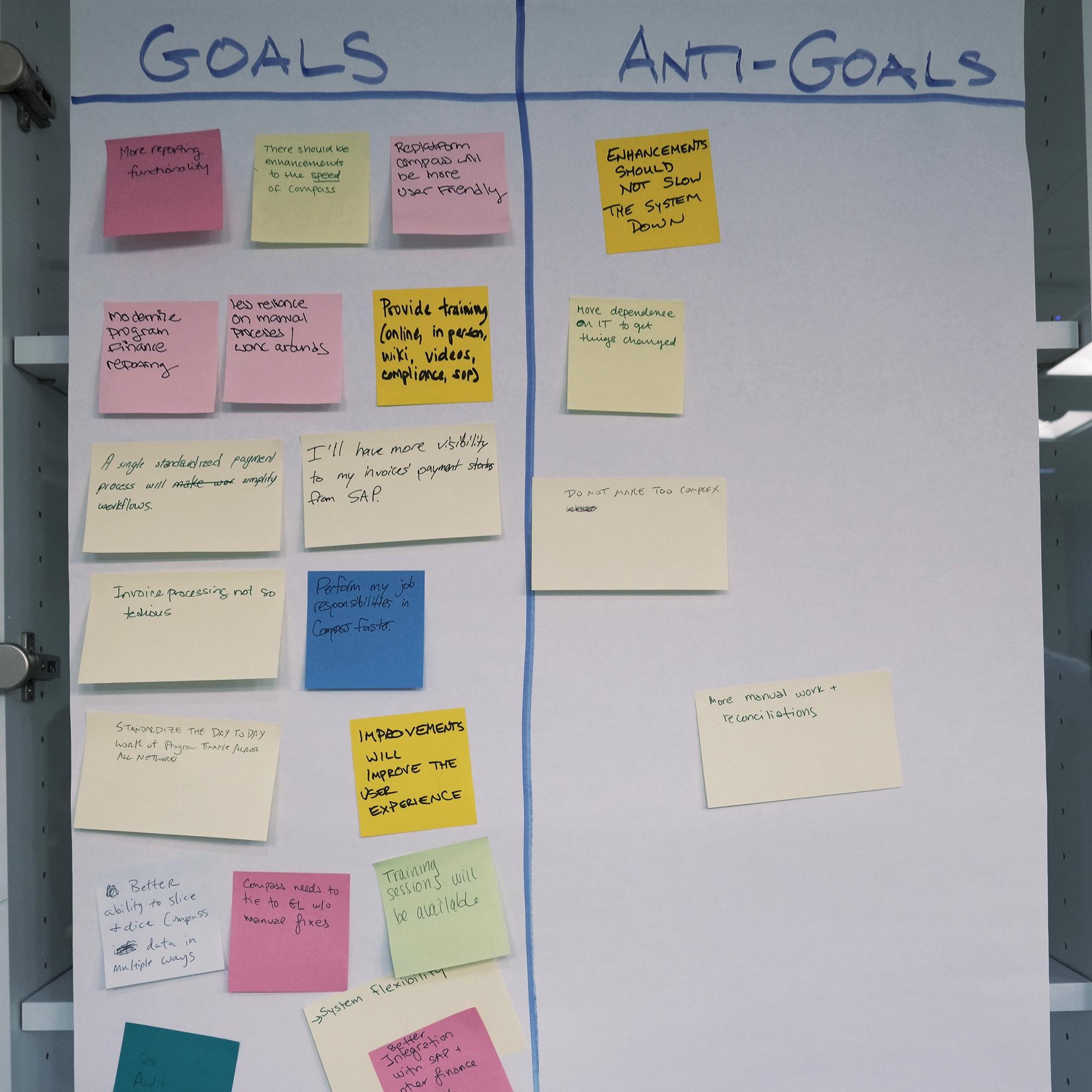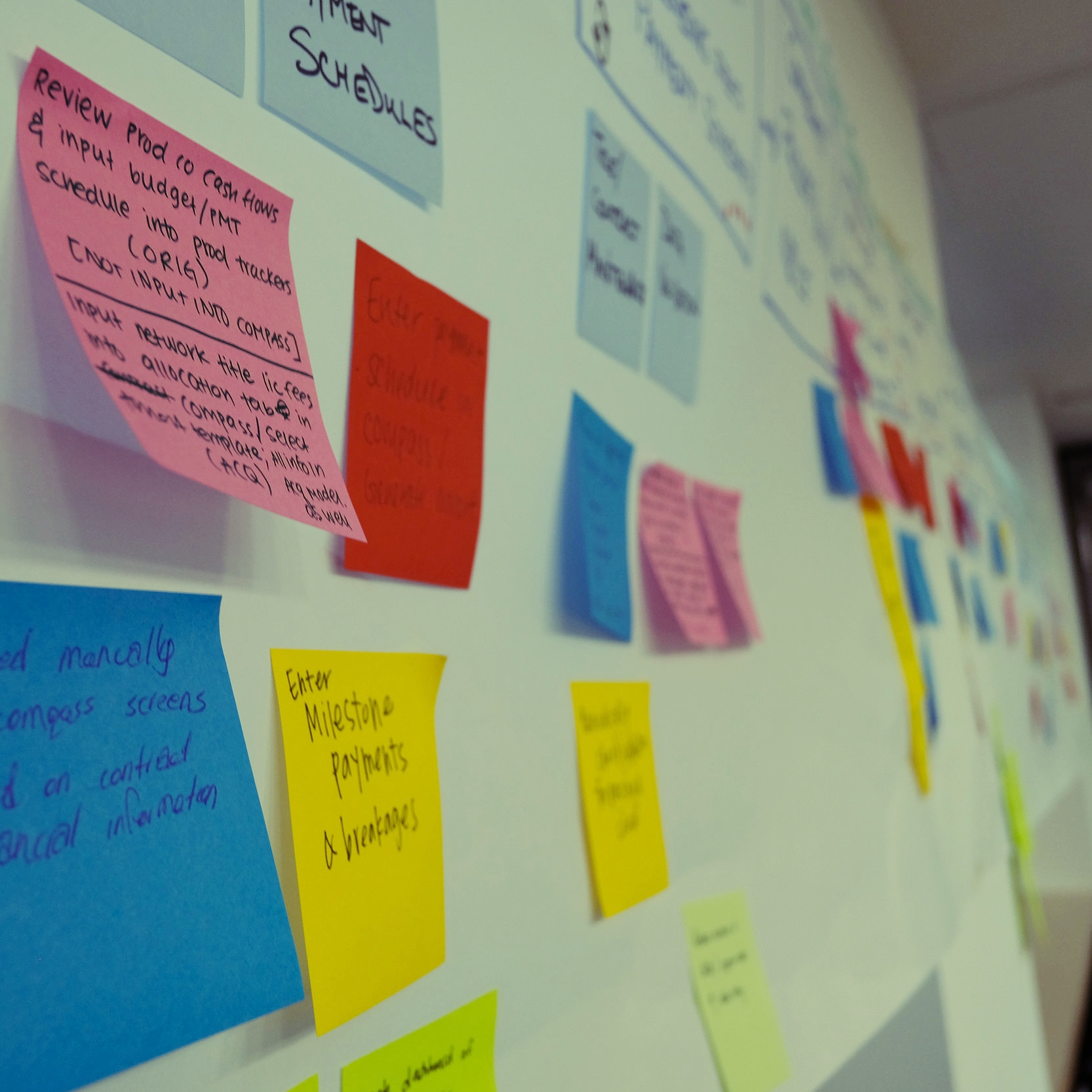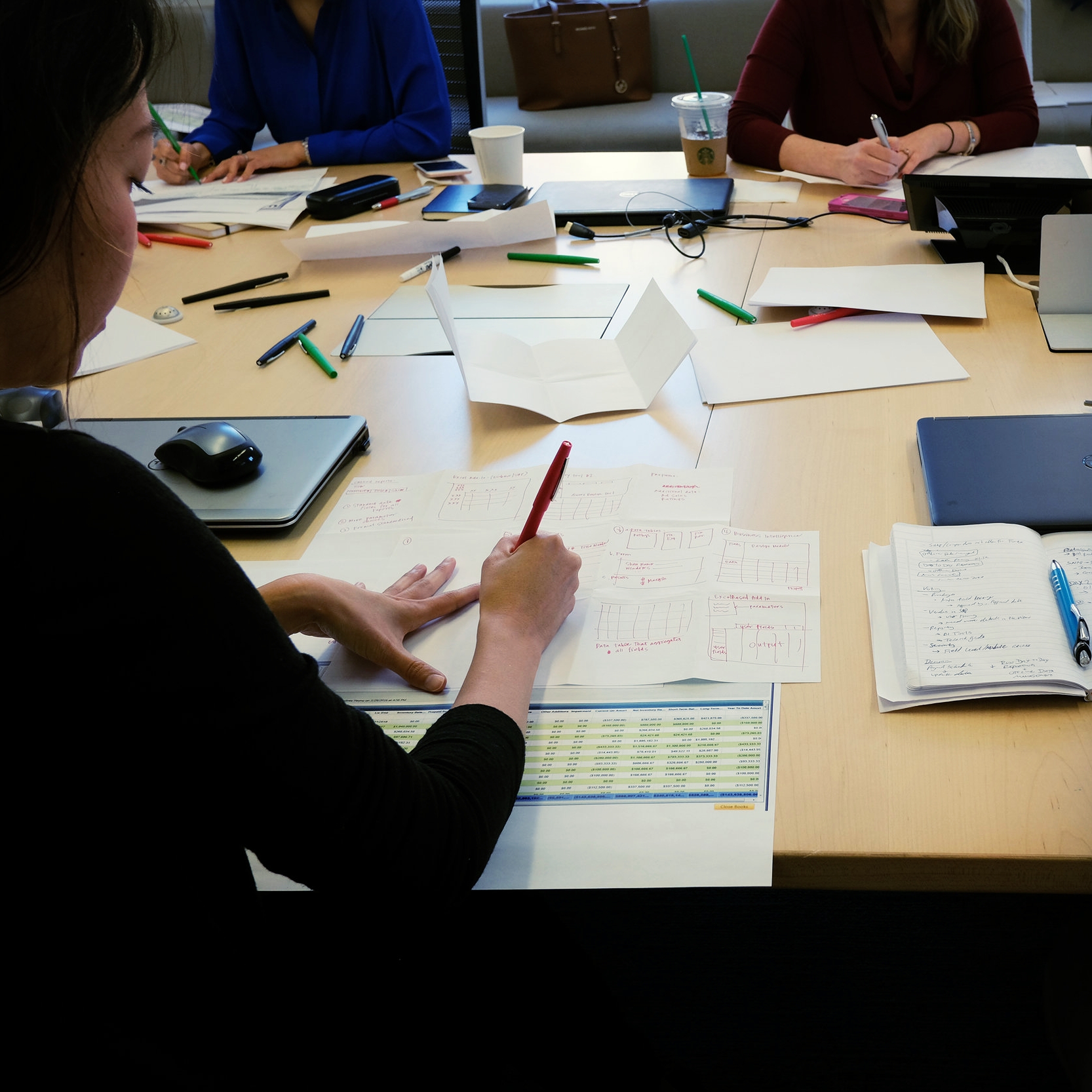Reaching alignment on a product direction
Context
A major broadcasting company had been working on improving a large internal product for over a year. They had mapped out current state flows extensively, highlighting regional discrepancies that existed across user groups. While they had prioritized a roadmap for product enhancements, they were struggling to achieve alignment – and ultimately, adoption and advocacy – from different internal groups.
Challenge
The client already had an existing backlog with over a hundred enhancements on the list, but getting everyone to agree that these were the most beneficial enhancements was the big challenge. They knew what success would look like: increased engagement (measured in specific online transactions), and improvements to the most frustrating problems current users were facing. Specific feature goals included better integration between systems, streamlined utilization of data, and improvements to reporting with minimal disruption.
Process
The business decided to bring together ten users representing four brand-related groups to attend an accelerated design sprint for three days, including the product manager and key decision makers. Because no prototyping was necessary, our sprint focused on reviewing and approving past research, pinpointing the most important parts of the process to improve, and sketching what those solutions could look like. As facilitators, we spent time in advance distilling prior research and drafting an overall experience map, rather than creating it from scratch with participants on the first day. After discussion, we voted on two main areas of focus, then split the large group of participants into two smaller groups to sketch solutions to those areas. Drawing out ideas led to a sense of ownership; having others vote on those ideas led to a sense of pride for many.
Outcome
Ultimately, the group determined the most important solution was not an enhancement to an existing feature, but rather the addition of brand new functionality that would streamline a time-consuming offline process. To customize our deliverables, we added an online card sort as a final activity, resulting in prioritized list of user stories, replacing rather than revising the backlog, and clear alignment from all groups over the most important issues to address in product development.





